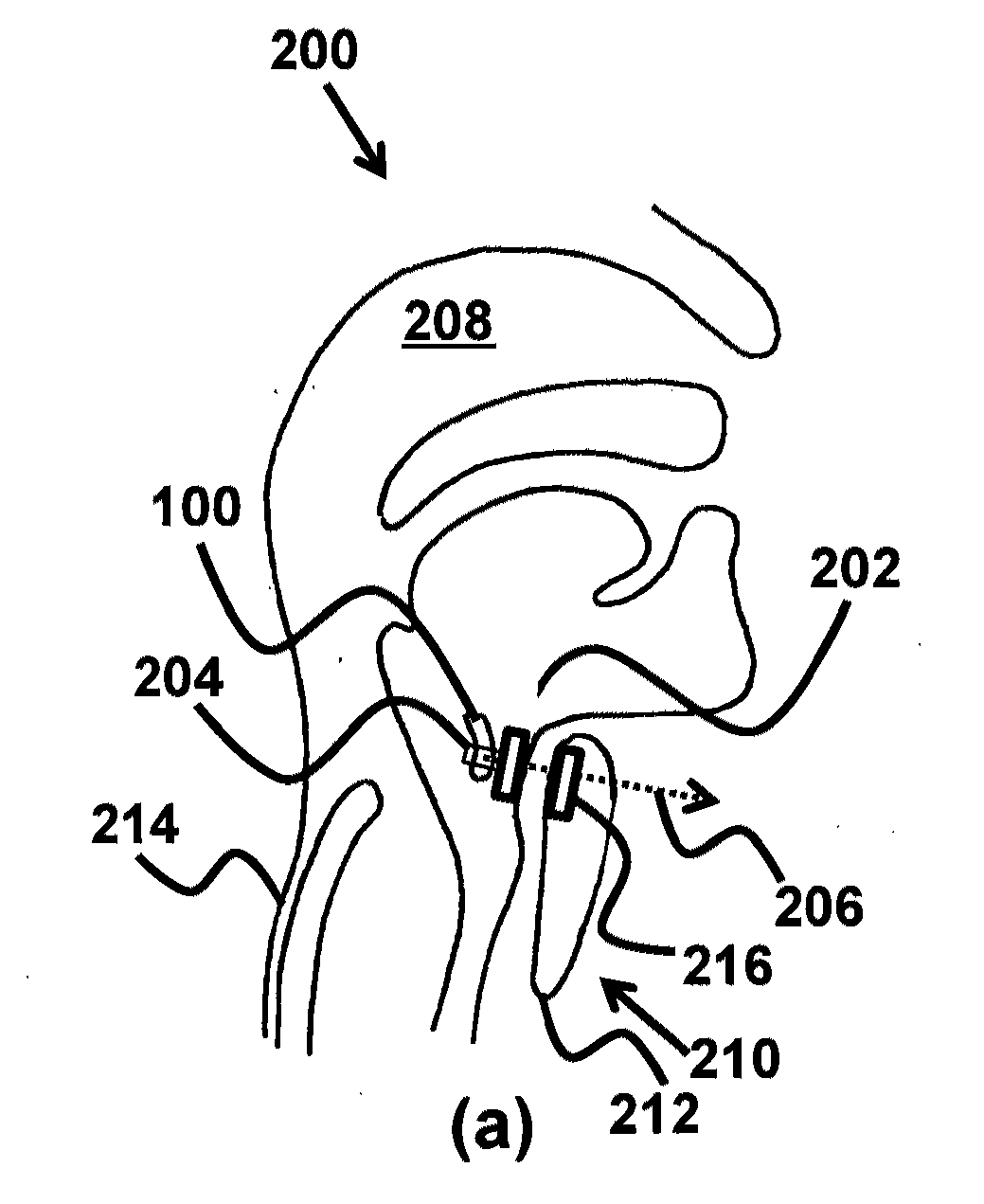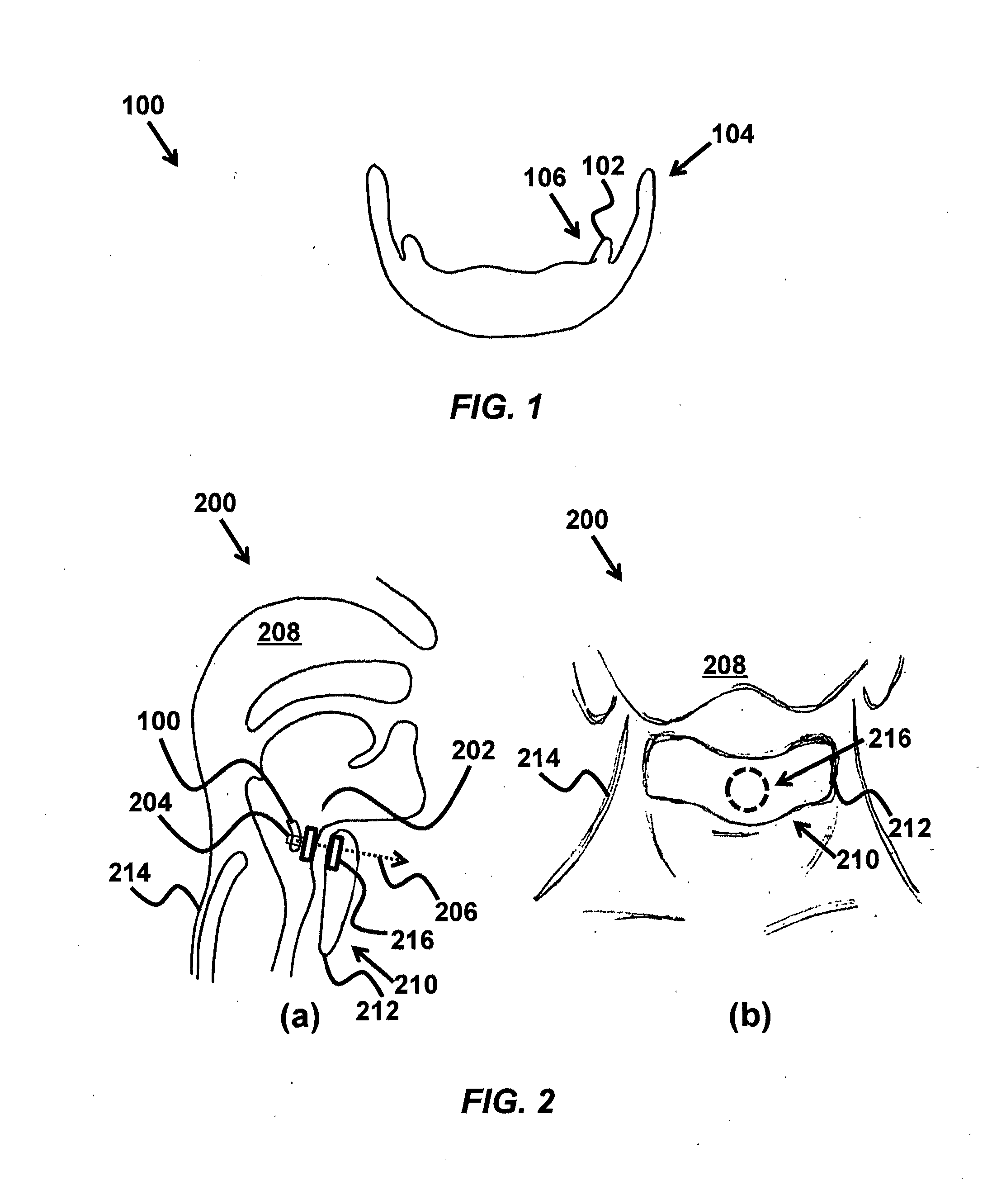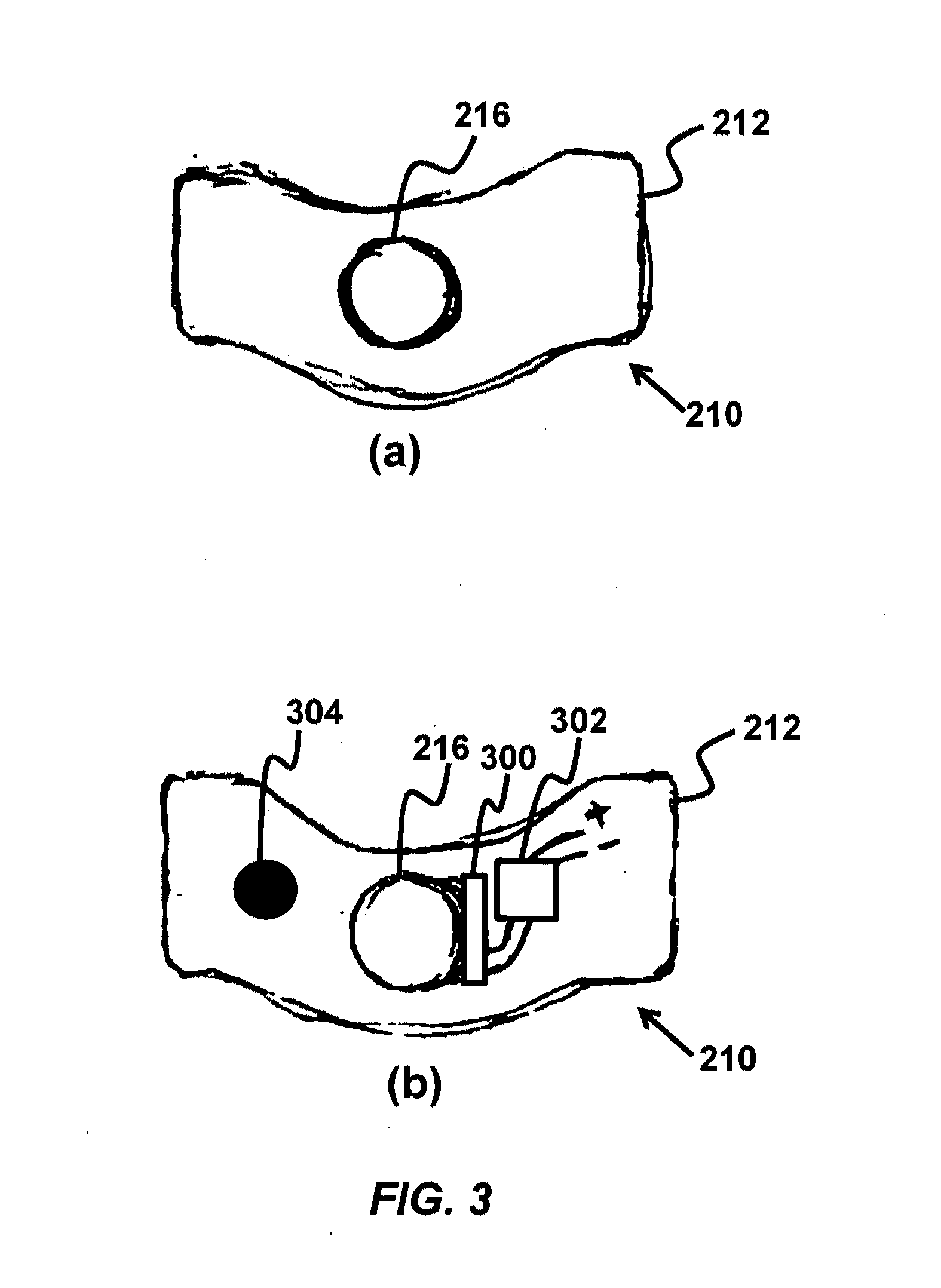Device and method for correcting obstructive sleep apnea
a technology for obstructive sleep apnea and sleep disorders, which is applied in the field of sleep disorders, can solve the problems of affecting health and daily function, affecting the quality of life,
- Summary
- Abstract
- Description
- Claims
- Application Information
AI Technical Summary
Benefits of technology
Problems solved by technology
Method used
Image
Examples
Embodiment Construction
[0037]The current invention provides an external orthotic device for pulling on the hyoid bone using an internally implanted magnet attached the hyoid. The device cradles an external magnet whereby the distance between the internal and external magnet can be adjusted by adjusting the external device, moving the cradled external magnet closer to or farther away from the implanted magnet, and thus adjusting the force applied to the hyoid.
[0038]The orthotic device has a shape or multiple shapes that fits a wide spectrum of anterior neck configurations. The shape of the device minimizes and / or avoids contact pressure over the hyoid bone and other structures that are secured directly to an internal ferric element. The ferric element could be either permanently magnetized (e.g. rare-earth magnets) or it could be a magnetically susceptible material that becomes magnetized when exposed to the magnetic field of the external device (e.g. a paramagnetic material such as steel).
[0039]According ...
PUM
 Login to View More
Login to View More Abstract
Description
Claims
Application Information
 Login to View More
Login to View More - R&D
- Intellectual Property
- Life Sciences
- Materials
- Tech Scout
- Unparalleled Data Quality
- Higher Quality Content
- 60% Fewer Hallucinations
Browse by: Latest US Patents, China's latest patents, Technical Efficacy Thesaurus, Application Domain, Technology Topic, Popular Technical Reports.
© 2025 PatSnap. All rights reserved.Legal|Privacy policy|Modern Slavery Act Transparency Statement|Sitemap|About US| Contact US: help@patsnap.com



